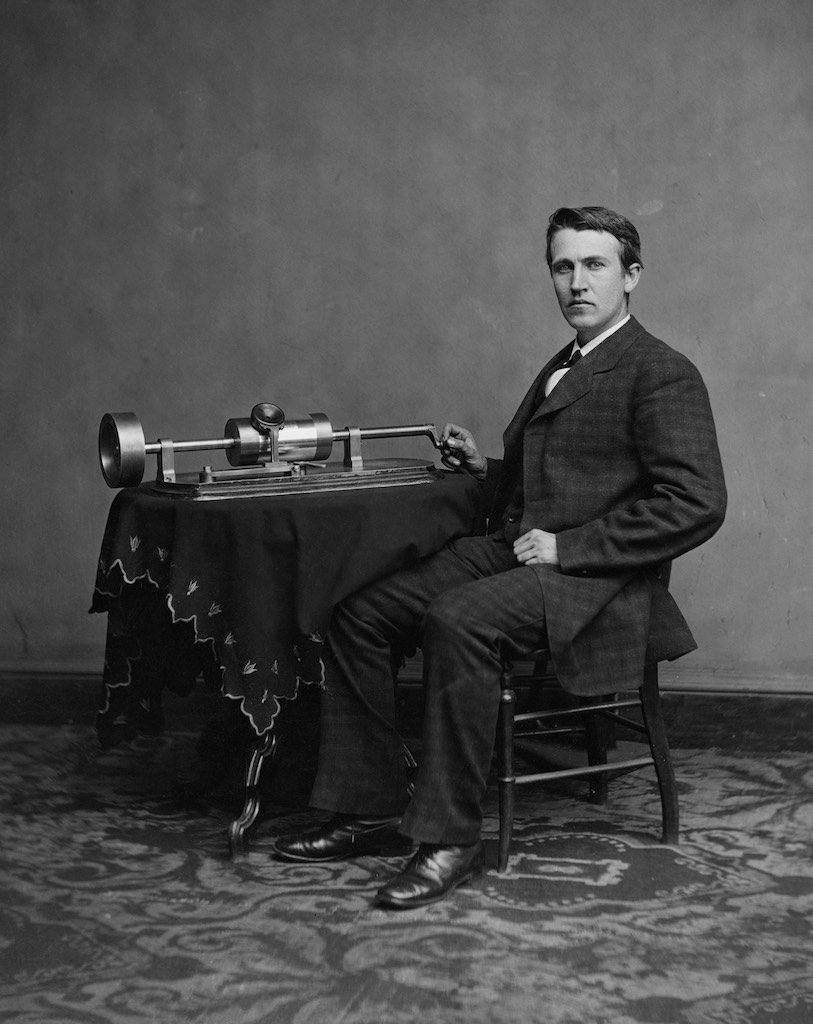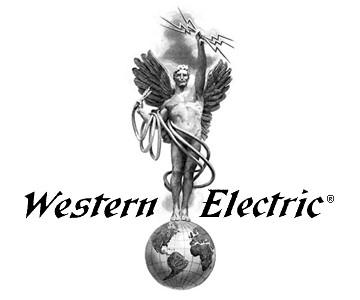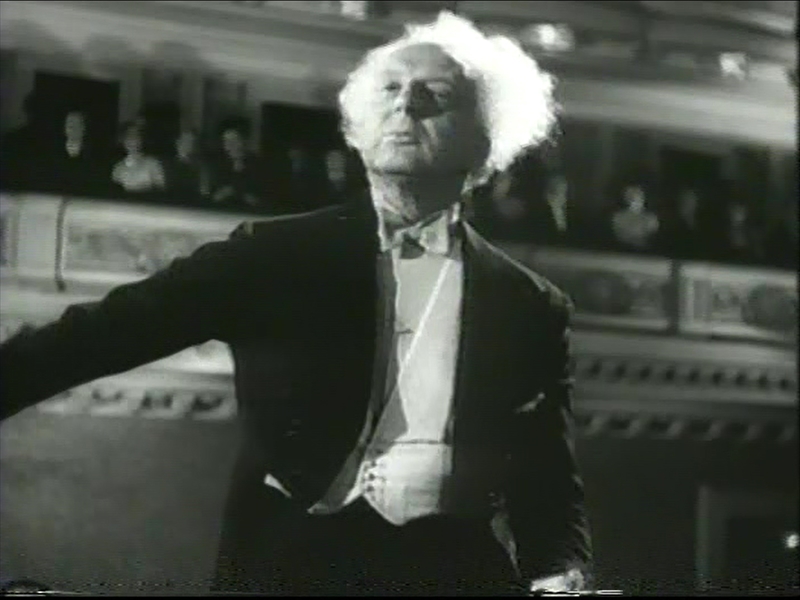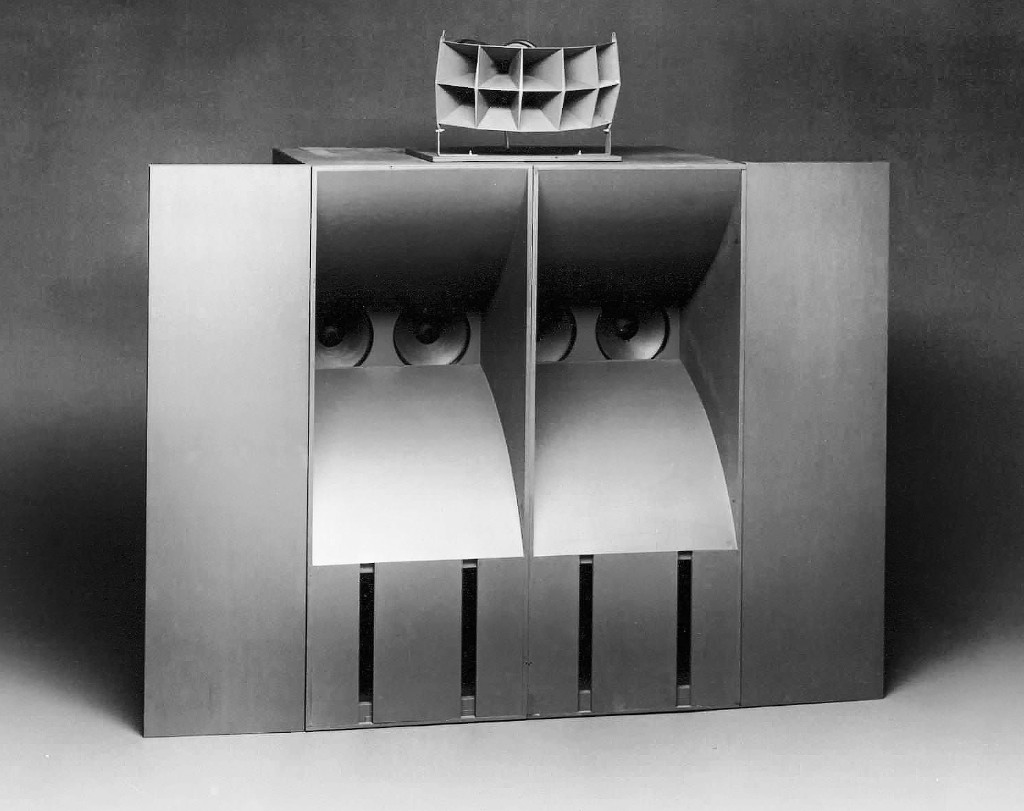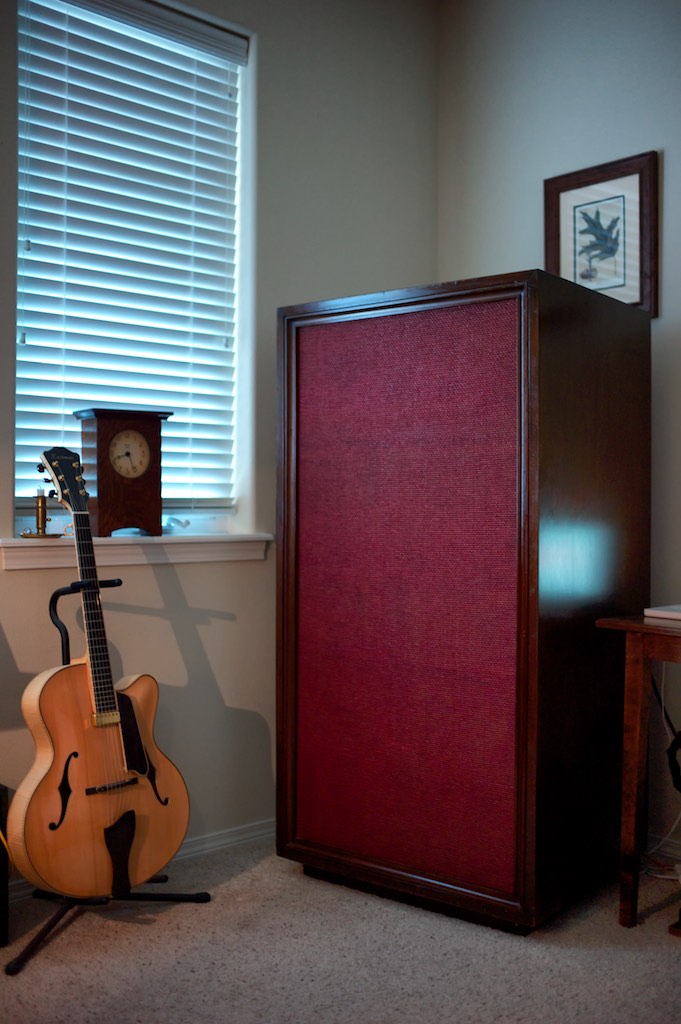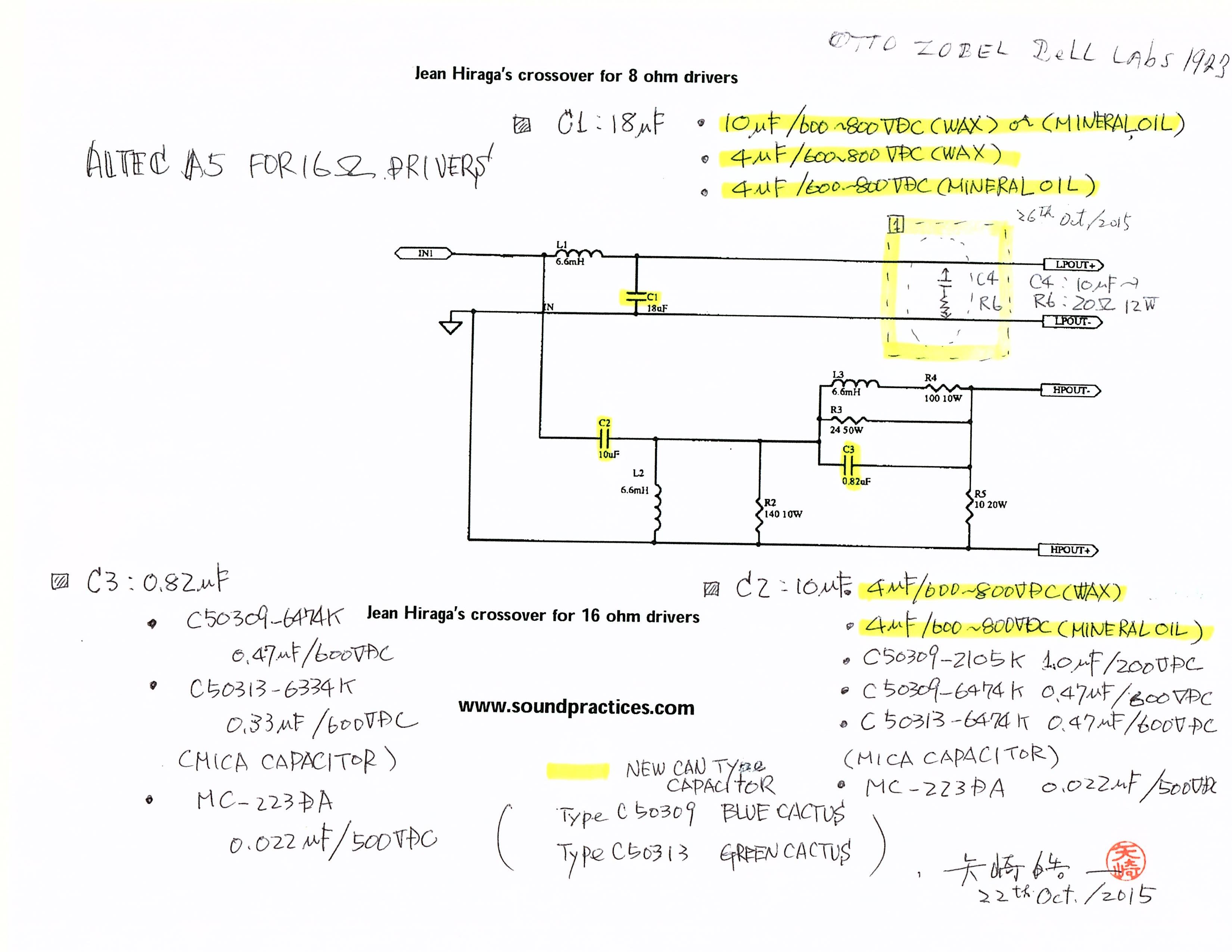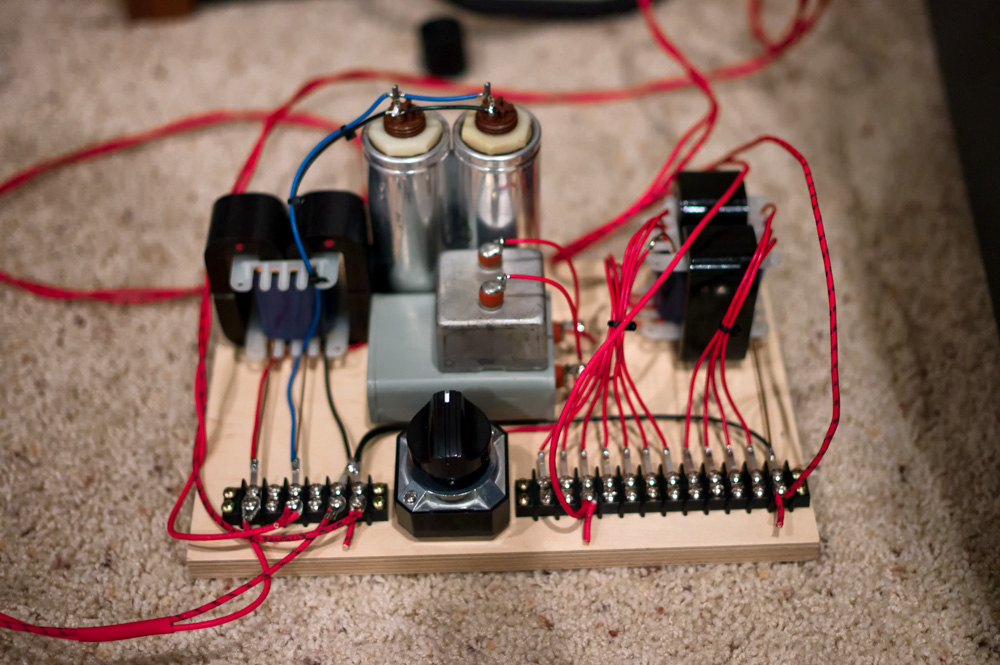Happy 2016 my friends, and thank you all so much for all the well wishes in closing out 2015, I truly appreciate it!

Vintage Altec-Lansing A5 Voice of the Theater loudspeaker system restored to a pristine state by Gary Fischer.
I want to start the New Year of 2016 with a post about the last thing I mentioned in my last post of 2015 - the Altec A5 VOTT Project.
The Altec-Lansing Voice of the Theatre loudspeaker systems have a storied history that has made them a not often seen legend from a bygone era, and I feel really privileged to have two pairs of different versions of these venerable loudspeaker systems here at Jeff's Place to listen to and tell you about.
It has been a relatively short amount of time that music lovers have been able to leave live music venues and listen to recorded music.
It was only in 1877 that Thomas Edison invented recording with the phonograph, enabling the recording of sound & music.
In 1907 Lee de Forest patented a triode vacuum tube that could provide amplification by adding a third electrode as a control grid so an audio signal could modulate electron flow through the tube, and by 1916 Western Electric was making audio amplifiers in America.
In 1926 sound recording research pioneers at Bell Labs, E.C. Wente & A. L. Thuras, patented a high-fidelity compression driver (Western Electric 555) to power exponential horns used in theatres.
In 1927 Theodore Case & Edward Sponable introduced a perforated movie screen that were relatively transparent to sound, which allowed the compression drivers & exponential horn loudspeakers developed by Wente & Thuras to be placed behind the movie screen for the premiere of the movie The Jazz Singer at the Warner Theater in October of 1927, which was the prototype for the Western Electric sound system that would become popular in American movie theatres.
In 1931 (of notable importance to recorded music lovers), the great conductor, Leopold Stokowski, invited Bell Labs to begin sound recording experiments with his Philadelphia Orchestra.
Western Electric dominated the theater movie sound business in America until 1936, when the movie theater industry declined dramatically during the depression, and then Western Electric decided to abandon the rapidly declining movie theater sound part of their business.
In response, a group of Western Electric engineers (George Carrington, Mike Conrow, and Alvis Ward) founded Altec in 1937 (Altec stands for “all technical”) to pick up where Western Electric had left off in supporting the movie theater sound business.
Altec managed to survive the difficult economics of those next few years, and then in 1941 acquired the Lansing Manufacturing Co. loudspeaker company from Jim Lansing, so they could expand their business opportunities by manufacturing equipment to supply to movie theaters, and Altec-Lansing was born.
Eventually Metro-Goldwyn-Mayer Studios became dissatisfied with the Western Electric (and RCA) systems of the day, and Altec-Lansing was able to capitalize on that, and in 1945 the first Altec-Lansing Voice of the Theatre loudspeaker systems, like the A1, A4, and the A5, began to appear behind the screens in movie theaters, and by 1955 the Academy of Motion Picture Arts and Sciences adopted the Voice of the Theatre loudspeakers as the industry standard.
It was inevitable that hi-fi enthusiasts would become intrigued by the Altec-Lansing Voice of the Theatre loudspeaker systems. The French enthusiast audio magazine L´Audiophile, had opened a shop in Paris to demonstrate their do-it-yourself (DIY) audio projects and to sell parts to the DIY hi-fi hobbyists of France, with a demonstration system using an Altec-Lansing A5 Voice of the Theatre loudspeaker system.
Keith Aschenbrenner (Auditorium 23) told me that when he had heard the L´Audiophile system, he immediately realized that his hi-fi system at home was a far cry from the musical realism and dynamic truths that the L´Audiophile system with its Voice of the Theatre loudspeakers achieved so easily.
John Stronczer (Bel Canto Design), described a similar experience for Sound Practices readers in Issue 11, telling them about when he first heard Jean Hiraga’s Altec-Lansing A5 Voice of the Theatre loudspeakers at the Nouvelle Revue du Son listening room in Paris. John said, “I confess that it was love at first listen with the A5s. I mean I listened to a single bar and I knew.” John went on to adapt an Altec Lansing A5 ‘Voice of the Theatre’ loudspeaker system for home use for his own music listening pleasure.
The Altec-Lansing Voice of the Theatre loudspeaker systems are an incredibly important loudspeaker milestone from the Golden Age of audio design, but have now disappeared from view to be covered by the sands of time.
I confess, that ever since I’ve been writing about audio, I’ve been interested in the contribution that the Altec-Lansing Voice of the Theatre loudspeakers have made to film, music, and audio.
I decided I wanted to hear one of these great Voice of the Theatre loudspeaker systems for myself, and in November of 2015 my friend Ron Barbee and I traveled to Seattle, Washington, to hear & buy a pair of Voice of the Theatre loudspeakers that were custom made for the great maestro, Leopold Stokowski, who collaborated with Altec-Lansing on projects during his career (more about them here).
The Stokowski VOTTs have stunning sound quality, and at this point in time, combined with the SPEC RSA-M3 EX Real Sound Amplifier, they are the most musical transducers here at Jeff's Place.
The Stokowski VOTTs have Altec 804A 16-Ohm compression drivers mated to Altec 511-B horns, Altec 803B 16-Ohm low-frequency drivers, and an Altec N-500-D crossover network, all mounted into a massive enclosure (much bigger than it looks in the photo above) with a bass horn cabinet that looks similar to an 825 built into it. The Stokowski VOTTs are a one-off sort of deal though, so you can't experience them for yourself.
A bit before I had bought the Stokowski VOTTs, I had commissioned Gary Fischer to restore a pair of Altec-Lansing A5 VOTTs to pristine condition to serve as the basis for the Altec A5 VOTT Project here at Jeff's Place, which I have started telling you about (1, 2).
In stock form the Altec-Lansing A5 VOTTs are not known for their sound quality, and the A5 VOTTs that so impressed Keith Aschenbrenner (Auditorium 23), John Stronczer (Bel Canto Design), and many others, had been modified by Jean Hiraga to adapt them for home use.
Gary Fischer and I had been corresponding about Altec-Lansing Voice of the Theatre loudspeaker systems while he was restoring the A5s I had commissioned, and I chuckled when he told me, "Most people say, the cabinets are boomy, the horns are edgy and resonate, the high-frequency drivers are squeaky, the crossover networks are basic and inferior, but they are what they are, the best theatre speakers of the past."
After the A5 VOTTs arrived from Gary, Ron and I set them up, and gave them a listen in stock form. Guess what they sounded like? Pretty much like Gary said, "... (the bass is) boomy, the horns are edgy and resonate, the high-frequency drivers are squeaky ..."
So what was the difference between Jean Hiraga's A5 VOTTs that blew everyone away who heard them with their musical prowess, and a stock pair of A5 VOTTs? A number of things, but primarily the crossovers.
I am glad I got to hear the pristine A5 VOTTs that Gary restored for me with a stock pair of vintage N-500-C crossovers to use as a baseline, and they did not flatter the sound of the A5 VOTTs.
Unfortunately, one N-500-C crossover was malfunctioning, with the 4dB attenuation setting not working, and as a result we couldn't get the highs to integrate in my room. It would appear that the N-500-C was the victim of getting jostled around too much during shipping.
Gary has told me to send the N-500-C crossovers back to him, and he's going to send me a pair of N-500-D crossovers like those used in my Stokowski VOTTs as a replacement.
That's a neat turn of events actually, as I'll get to hear what the N-500-D crossovers do for the A5 VOTTs. Who knows, maybe they're part of the reason that the Stokowski VOTTs sound so incredibly good! I'll report back on the N-500-D crossovers with the A5 VOTTs at some point in the future.
But back to the modified Altec A5 VOTTs of Jean Hiraga's that impressed everyone so much back in the day. Jean Hiraga has made the circuit diagram for the crossover he designed for the A5 to adapt it to home use available to A5 enthusiasts.
Yazaki-san has suggested a 'Real Sound' components mix for the Hiraga-inspired crossover that we are going to build, and recommended one modification to the circuit. Daryl from Arizona Capacitors is making up a set of inductors for us to try in the crossover, so as soon as we get those from Daryl I'll begin breadboarding the circuit.
In the meantime, I've pressed into service a pair of autoformer based crossovers that I had Werner Jagusch in Germany build for me (€549 Euros/pair). Werner’s A5 crossovers are minimalist in parts count, and allow adjustment of the output & roll-off of the high-frequency horns, so it's easier to match the sound to your room & tastes.
Werner's A5 crossovers go a long ways towards taming the A5’s for home use, but not all of the way, and I think we can do a lot better by building a custom crossover and voicing it perfectly to the A5's. So if you're thinking of upgrading the crossovers on your A5 VOTTs hang tight and wait until we finish with the custom crossovers, as I'll be making all that information available to you in future posts as we proceed with the project.
For those who are interested, the best settings I've found so far for my A5 VOTTs with Werner's A5 crossovers, are with the high-frequency volume set on the sixth terminal screw from the left, with the roll-off starting frequency dial set at the 9 o'clock position.
I'm really excited about the Altec A5 VOTT Project adventure, and I'll have a lot more to tell you about our progress in the future.
Thanks for stopping by, and Happy New Year!




